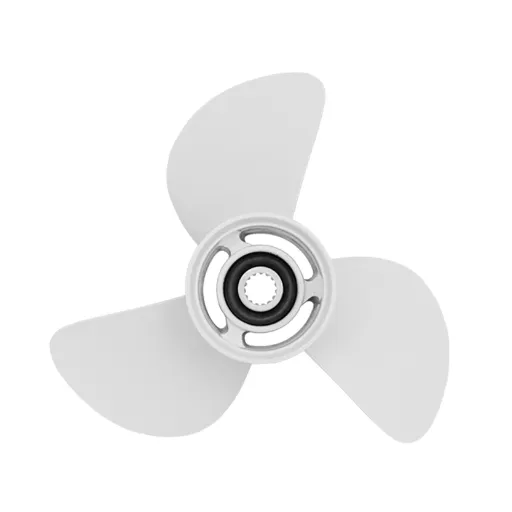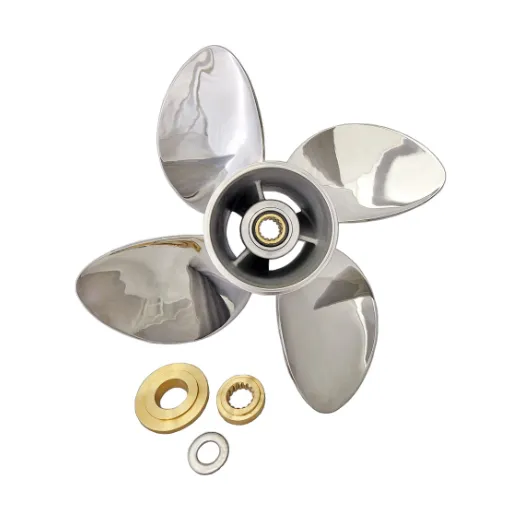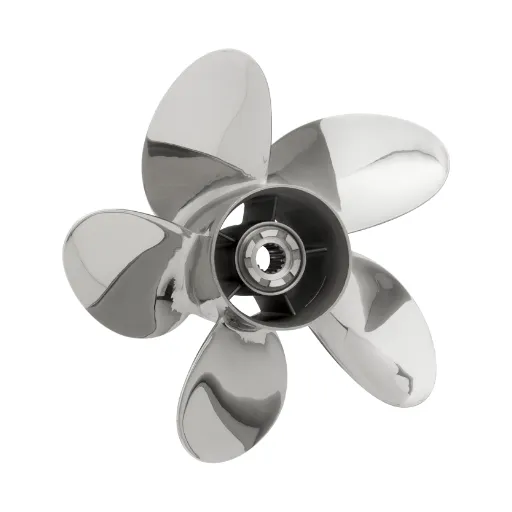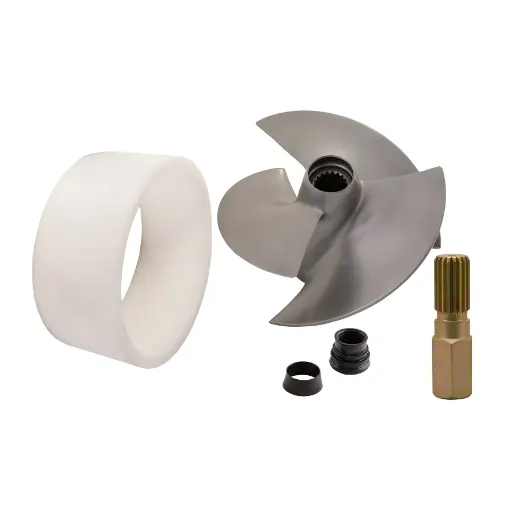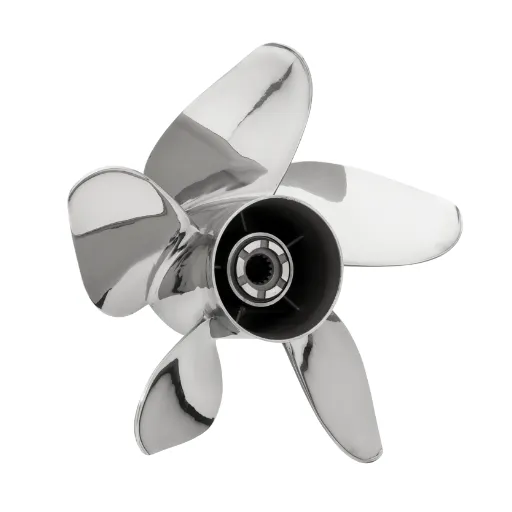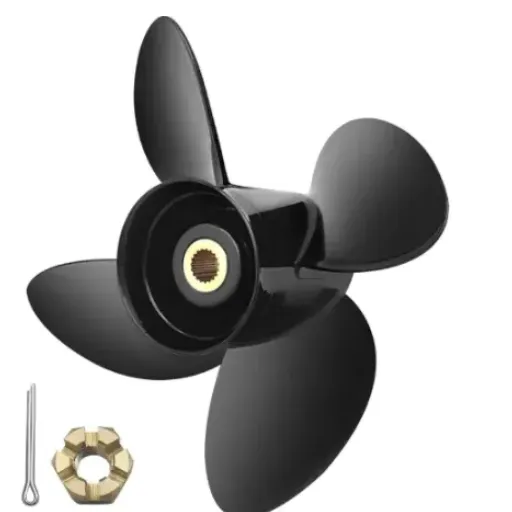Selecting the appropriate propeller for your Yamaha 90HP outboard motor is a vital consideration that can affect your boat in many ways: performance, fuel consumption, and maneuverability. However, the multitude of alternatives can make it challenging to pick the best one. This is the very reason why this guide is here to make it easier and help you discover the ideal prop for your Yamaha 90HP. No matter if you are after smoother acceleration, higher top speed, or increased longevity, knowing how to pick the right propeller will guarantee you an extraordinary boating experience.
Understanding Yamaha Propellers
Overview of Yamaha Outboard Engines
Yamaha outboard engines have earned a reputation for being super dependable, powerful, and tech-savvy hence they are the number one choice for almost all boating requirements. The power output of these engines is tuned finely with the fuel consumption so that they are very efficient in the end, this is the case of all sorts of users, from those who use their boats for leisure and fun to those who sail professionally. Yamaha’s range of engines consists of two-stroke, four-stroke, and electric models that exhaust gas options and types of users and their preferences or applications keep the people talking about the brand even more.
Key Features of Yamaha Outboards:
- Superior durability in harsh marine conditions with corrosion-resistant materials
- Cutting-edge control systems for enhanced user experience
- Silent running capabilities across all engine classes
- Easy-to-operate diagnostic systems
- Comprehensive service network for quick maintenance support
What makes the Yamaha outboards stand out even more is the true to their word claim regarding the durability factor in the most difficult to handle marine scenarios. They are made from some of the best corrosion-resistant materials and have reached the highest standards in innovative engineering so that these engines will run consistently even in the saltwater and freshwater conditions which are roughest on the earth. Yamaha’s involvement in such a case starts with bringing in cutting-edge control systems and silent running across all classes of the users who deem comfort and reliability as the most important attributes while towing or transferring through waters.
Importance of Selecting the Right Propeller
Choosing the appropriate propeller is a prerequisite for getting the most out of your boat regarding performance and efficiency. The propeller is one of the main factors that determine the speed of the boat, its fuel consumption and the engine life span so it is not only a critical factor for boating safety and fun but also for comfort. A wrong propeller has the power to cause unnecessary wear and tear of the engine, to cut down the boat’s performance in terms of speed and especially to increase the fuel usage.
⚠️ Factors to Consider When Selecting a Propeller:
- Boat Size: Larger boats require different propeller specifications than smaller vessels
- Engine Type: Match propeller specifications to your engine’s capabilities
- Intended Usage: Recreational, fishing, or high-performance applications
- Pitch and Diameter: Must conform to manufacturer’s recommended specifications
- Material and Design: Affects durability and effectiveness
The material and design of the propeller are in addition to the aforementioned factors determining its durability and effectiveness. Stainless steel propellers, for instance, last longer and perform better at high speeds whereas aluminum propellers are less expensive and suitable for occasional use. To keep the propeller in good working condition it should receive regular maintenance and inspections, and possible problems while being on the water should be avoided this way. Taking the time to properly choose and maintain the propeller not only makes your boating more pleasurable but also helps maintain the engine life.
Types of Propellers for Yamaha 90 HP
Choosing a propeller for a Yamaha 90 HP engine, it is necessary to take into account performance, material, and use. Propellers of different types are a part of Yamaha’s offering range which is specially made to the 90 HP models to the utmost efficiency and capacity.
Aluminum Propellers
Aluminum propellers are among the most preferred options for the Yamaha 90 HP engine primarily because of their low price and light weight. These propellers are great for everyday, frequent boating, for instance, fishing, cruising, or just relaxing. They give decent performance and are good for moderate speed. The aluminum propellers are sturdy enough for general use but might get into trouble if subjected to very rough conditions or if they come into contact with the seabed or certain underwater objects.
Stainless Steel Propellers
Stainless steel propellers are a class of their own when it comes to power and wear resistance, hence they are also very expensive. They are the best choice for speed oriented or performance based boating, like wakeboarding or long-distance offshore trips. The advantages of stainless steel propellers are better control, quicker take-off, and increased fuel economy when traveling at high speeds. Their price is higher than aluminum propellers, but the durability and the good performance make them a sensible investment for serious boating enthusiasts.
Specialty Propellers
When the purpose is to minimize cavitation or improve fuel efficiency, Yamaha has specialty propellers to offer as well. They can embody the likes of four-blade propellers to create more thrust for the boat and at the same time deliver a quieter ride or finely tuned models for precise water conditions. When the selection of a specialty propeller is involved, it is best to first seek advice from a Yamaha dealer or marine expert as this will not only confirm compatibility but also ensure the best performance.
Note: The decision on which propeller to use on the Yamaha 90 HP will finally be a matter of your boating habits, personal choices, and budget.
Material Considerations
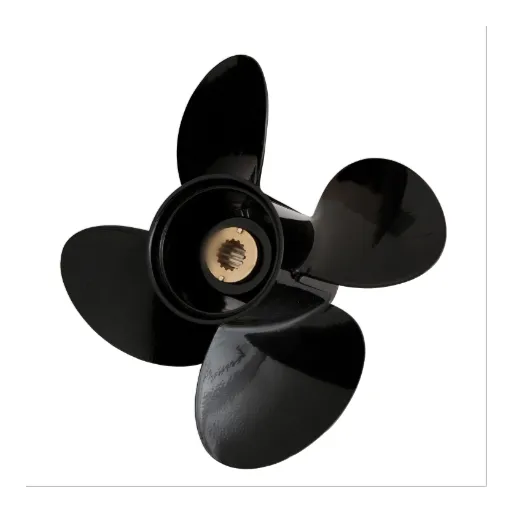
Stainless Steel vs. Aluminum Propellers
Aluminum propellers are less expensive, lighter, and more flexible, whereas stainless steel propellers are more expensive, heavier, and less flexible but have better performance and are more durable.
| Key Point | Aluminum | Stainless Steel |
|---|---|---|
| Cost | Cheaper | Expensive |
| Weight | Lighter | Heavier |
| Durability | Less durable | More durable |
| Flexibility | More flexible | Less flexible |
| Performance | Good | Excellent |
| Best For | Recreational boating, occasional use | High-performance, frequent use |
Understanding Propeller Specifications
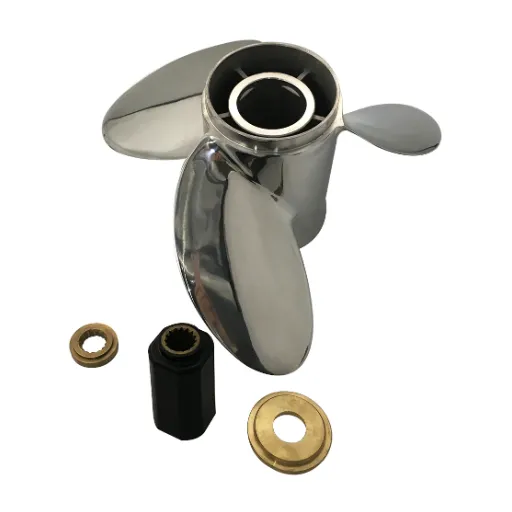
Diameter and Pitch Explained
The diameter and pitch of a propeller are critical specifications that directly impact your boat’s performance. The diameter is the measurement across the circle created by the propeller blades as they rotate, while the pitch represents the theoretical distance a propeller would move forward in one complete revolution.
💡 Key Statistics:
- A 1-inch increase in pitch typically results in a 150-200 RPM decrease at wide-open throttle
- Standard pitch range for 90 HP engines: 13-21 inches
- Optimal RPM range for Yamaha 90 HP: 5000-6000 RPM
- Proper pitch can improve fuel efficiency by up to 15%
How They Affect Performance
Understanding how diameter and pitch affect your boat’s performance is essential for selecting the right propeller. A larger diameter typically provides more thrust at lower speeds, making it ideal for heavy loads or slow-speed trolling. Conversely, a smaller diameter allows for higher top speeds but may sacrifice low-end power. The pitch determines whether your boat accelerates quickly or reaches higher top speeds. A lower pitch propeller will accelerate faster and is better for water sports and heavy loads, while a higher pitch propeller provides better top-end speed and fuel efficiency at cruising speeds.
Selecting the Right Propeller for Your Needs
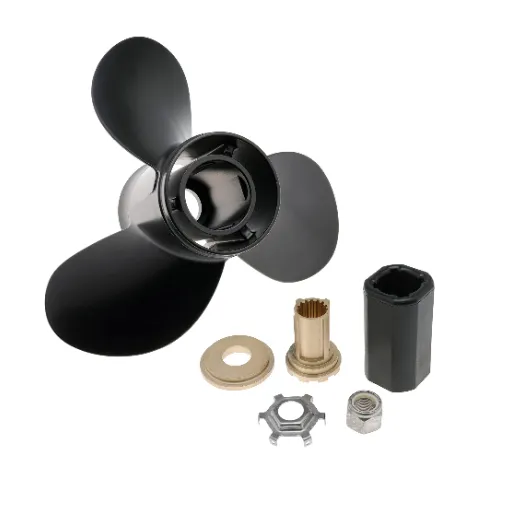
Factors to Consider
✓ Essential Checklist for Propeller Selection:
- Boat Type and Size: Consider hull design, weight, and length of your vessel
- Primary Usage: Determine if you’ll be fishing, cruising, water sports, or racing
- Load Capacity: Account for typical passenger count and gear weight
- Operating Conditions: Freshwater vs. saltwater, calm vs. rough waters
- Engine RPM Range: Ensure propeller keeps engine within manufacturer’s recommended range
- Budget Constraints: Balance initial cost with long-term performance benefits
- Manufacturer Recommendations: Always reference Yamaha’s specifications
Matching Propeller to Boat Type
Different boat types require different propeller characteristics to achieve optimal performance. Understanding these requirements will help you make an informed decision that enhances your boating experience.
| Boat Type | Recommended Propeller | Key Benefits |
|---|---|---|
| Fishing Boats | Low-pitch, 4-blade aluminum | Better hole shot, low-speed control, quiet operation |
| Pontoon Boats | 4-blade, moderate pitch | Improved lift, better handling, smoother ride |
| Ski/Wake Boats | 3-blade stainless steel, low pitch | Quick acceleration, strong pulling power |
| Cruisers | 3-blade stainless steel, higher pitch | Better top speed, fuel efficiency at cruising speed |
| Multi-Purpose Boats | 4-blade aluminum or stainless, moderate pitch | Balanced performance for various activities |
Top Yamaha Propeller Recommendations
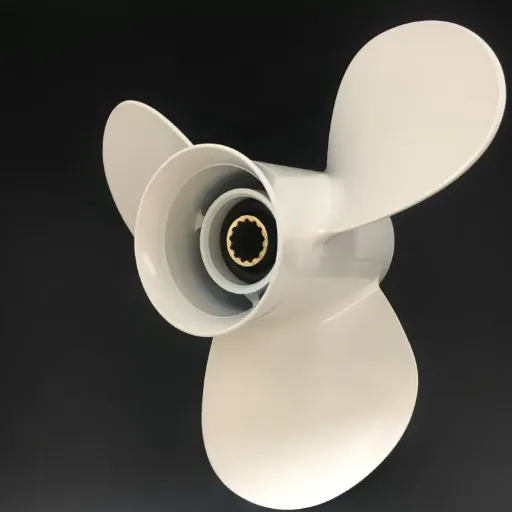
Best Overall Propellers
Based on performance, durability, and user satisfaction, several Yamaha propellers stand out as excellent choices for 90 HP engines. These recommendations cater to different needs and budgets while maintaining Yamaha’s quality standards.
🏆 Top 5 Propeller Recommendations:
1. Yamaha Saltwater Series II Stainless Steel
Best for: High-performance and saltwater use
Features: Exceptional corrosion resistance, superior thrust, ideal for offshore fishing
2. Yamaha Talon Aluminum
Best for: Budget-conscious boaters and general use
Features: Affordable, lightweight, good all-around performance
3. Yamaha Performance 4-Blade Stainless Steel
Best for: Heavy boats and improved handling
Features: Better low-speed control, reduced vibration, smooth acceleration
4. Yamaha Reliance 3-Blade Aluminum
Best for: Recreational boating and freshwater use
Features: Cost-effective, reliable performance, easy to maintain
5. Yamaha Talon SS Stainless Steel
Best for: Speed enthusiasts and performance seekers
Features: Maximum top speed, fuel efficiency at high speeds, long-lasting durability
Budget-Friendly Options
For boaters looking to maximize value without compromising too much on performance, aluminum propellers offer an excellent entry point. These options provide reliable service for recreational users and those who boat occasionally, delivering solid performance at a fraction of the cost of premium stainless steel models.
Installation and Setup Tips
Best Practices for Installation
Proper installation of your propeller is crucial for optimal performance and safety. Following manufacturer guidelines and best practices will ensure your propeller operates efficiently and lasts longer while preventing potential damage to your engine and drivetrain.
🔧 Installation Best Practices:
- Clean the propeller shaft thoroughly before installation to remove any debris or old grease
- Apply marine-grade grease to the shaft to prevent corrosion and facilitate future removal
- Ensure all washers and spacers are properly positioned according to manufacturer specifications
- Torque the propeller nut to the exact specifications recommended by Yamaha
- Install a new cotter pin or locking mechanism to secure the propeller nut
- Check for proper clearance between propeller and anti-ventilation plate
- Verify that the propeller spins freely without wobbling or binding
- Keep detailed records of installation procedures and torque settings for future reference
Another thing that I consider crucial is sealing and lubricating by using correct materials according to the manufacturer’s recommendations. This will allow the system to cope with the harshest environmental conditions and over a long time to be at the peak of its performance. I am very careful in applying bolting and fastening techniques and making sure that all the connections are very tightly secured so that the system is not unnecessarily stressed during operation. The installation activities, when performed in the aforementioned manner, will not only result in increased efficiency but also in avoiding expensive repairs.
Maintaining Your Yamaha Propeller
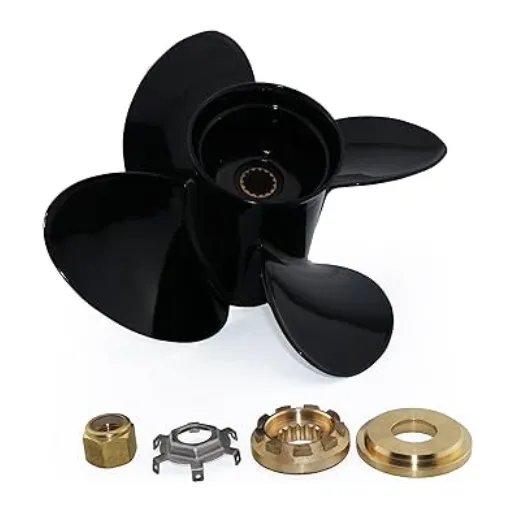
The maintenance of the Yamaha propeller regularly is an important factor that guarantees the best performance and the longest lifespan of your propeller. To perform maintenance, firstly, the propeller should be inspected for visible signs of damage, which can be in the form of cracks, dents or wear that may be characterized as of the crack, dent or excessive type. If left unattended such problems will not only affect performance but also the fuel consumption. Removing the propeller occasionally is also vital in order to check the shaft for the fishing lines or other debris that could have been wrapped around and that could affect the seal and cause water intrusion.
📋 Maintenance Checklist:
Before Each Use:
- Visual inspection for obvious damage
- Check propeller nut tightness
- Look for fishing line wrapped around shaft
Monthly (or every 20 hours):
- Remove propeller and inspect shaft seal
- Clean and re-grease propeller shaft
- Check for blade damage or wear
- Inspect hub for slippage or damage
Annually or Seasonally:
- Professional inspection and service
- Check for corrosion, especially in saltwater use
- Replace worn or damaged components
- Verify proper propeller balance
Propeller shaft lubrication is another important aspect of maintaining your Yamaha propeller. High-quality marine grease should be applied to the shaft to prevent rust and to make it easy to remove during the next maintenance. Moreover, if there are changes in the vibrations or performance, it is recommended to inform about these because they can be signs of problems with the propeller alignment or balance. If the above-mentioned checks are included in the regular maintenance schedule, then the surprises of breakdowns could be avoided and the efficiency of the Yamaha propulsion system could be maximized.
Signs of Wear and When to Replace
Monitoring the Yamaha propeller for every indication of wear is very important for both performance and safety. Physical damage visible to naked eye like cracks, bent blades, or chipped edges are some of the common signs of wear. Even a small deformation can create an imbalance which will not only affect the efficiency of the boat but also increase the fuel consumption. On top of that, if you experience a decrease in acceleration, trouble in keeping a steady speed, or strange vibrations during operation, the propeller may be going bad and it’s time for you to look after it.
⚠️ Warning Signs – Replace Your Propeller If You Notice:
- Physical Damage: Cracks, bent blades, chipped edges, or missing pieces
- Performance Issues: Decreased acceleration, difficulty maintaining speed, or lower top speed
- Unusual Vibrations: Excessive shaking or noise during operation
- Increased Fuel Consumption: Noticeably higher fuel use without increased load
- Corrosion: Severe pitting, especially in saltwater environments
- Hub Damage: Worn or slipping hub that affects thrust efficiency
- Imbalance: Propeller doesn’t spin smoothly or wobbles when rotating
Corrosion is an indicator of performance which should be regularly checked, particularly in the case of saltwater environments. The harsh elements plus time may cause pitting or even complete destruction of material which, in turn, will lead to a very weak propeller. Moreover, the hub should also be inspected for wear since a damaged or slipping hub can turn the thrust inefficiency and call for replacement. To guard against failure or flaws, always check the performance of your propeller with the standard benchmarks set for your vessel. In case the performance is not up to the mark even though maintenance is done properly, it could be the time to fit a new one matching your engine and boating needs. Keeping a close eye on the prop and taking care of wear early can spare you more mechanical problems and keep your water performance at its best.
Conclusion
Key Takeaways:
Selecting the right propeller for your Yamaha 90 HP outboard motor is a decision that significantly impacts your boating experience. By understanding the different types of propellers available, material considerations, and proper specifications, you can make an informed choice that enhances performance, improves fuel efficiency, and extends engine life.
Whether you choose aluminum for budget-friendly recreational use or stainless steel for high-performance applications, ensure that your selection matches your boat type, intended usage, and operating conditions. Regular maintenance and timely replacement of worn propellers will keep your Yamaha outboard running at peak efficiency for years to come.
Remember to always consult Yamaha’s specifications and seek professional advice when needed to ensure optimal compatibility and performance.
References
- What Is an Outboard Motor & How Does It Work?
A detailed explanation of outboard motor mechanics, including propeller functionality. - Outboard Engine Maintenance Technician Training
A training resource covering maintenance for marine outboards, including 90-200 HP engines. - Basic Powerboating: Safety & Rescue
A guide discussing propeller specifications and their impact on performance. - Johnson 130 HP V4 Ocean Pro Manual
A manual for marine enthusiasts, offering insights into outboard motor operations. - Right Hand – Stainless Steel Propeller – OS-1617
A resource on propeller compatibility for 90 HP and larger outboard engines. - Click here to read more.
Frequently Asked Questions (FAQ)
Q: What are the best propellers for Yamaha outboard motors when used with 90 hp engines?
A: Yamaha outboard motor propellers for 90 hp engines are best if they are made of three-blade and four-blade frameworks. Each style possesses distinct advantages like better speed-up, fuel economy, and overall operation.
Q: What impact does propeller size have on Yamaha outboard performance?
A: A propeller’s size influences directly the performance capabilities of the motor in terms of speed, thrust, and fuel economy. It might be that a larger diameter propeller can lead to better the ship’s quicker start and overall performance, whereas a smaller one can give higher a ship’s top speed. The correct prop should be matched to the hull dimensions and the load being carried.
Q: What is the best material for propellers for Yamaha outboard boats?
A: Stainless steel is usually considered as the top material for Yamaha outboard boat propellers, especially for 90 hp engines. It provides the highest lifespan, the best performance, and the most corrosion resistance among the various options. While aluminum props are lighter and cheaper, they may not deliver the performance level of stainless steel props.
Q: What steps do I need to take in order to calculate the right pitch for my Yamaha outboard propeller?
A: The right pitch for your Yamaha outboard propeller can be determined by taking into account such elements as engine RPM, boat weight, and preferred speed. With a prop of bigger pitch you will be able to go faster but it may take more power as well; whereas a prop of smaller pitch will improve acceleration and hole shot. You might want to take advantage of an online tool to identify the best pitch for your configuration.
Q: How do three-blade and four-blade propellers differ from each other?
A: Three-blade propellers are made to reach high speed and efficiency, hence they are suitable for recreational boating, whereas four-blade ones give more thrust and better handling which are advantageous for heavy loads and smoother rides at lower speeds. Making a decision between them comes down to your craft type and its intended use.
Q: Do Yamaha outboards require anything special in terms of hardware in order to work with certain props?
A: There are some Yamaha outboard propeller configurations that do not necessitate any special hardware for operation thus they can be simply fitted. Conversely, certain exotic props may require extra attachments like a shift dampener or a particular hub for optimal performance. Make sure you are aware of the manufacturer’s directives prior to fitting.
Q: What are the reasons for getting a performance propeller for a Yamaha 90 hp outboard?
A: A performance propeller for a 90 hp Yamaha outboard can boost the overall performance of that engine by a great extent. Such props give remarkable thrust, have less fuel consumption, and better keep the course of a boat, in particular when it is loaded. They are made to utilize the maximum RPM and speed thus are meant for serious boaters.
Q: What are the most efficient ways to use a Yamaha outboard to save on fuel?
A: If you want to save fuel using your Yamaha outboard motor, it is good to start with the selection of the right propeller. You need to pick a propeller that appropriately matches your boat’s hull and engine power; this will lead to little slippage and thus, improved acceleration. Attending to proper loading and engine maintenance also results in lower fuel consumption.
Q: Which elements are of the utmost importance when making your choice of Yamaha outboard motor propellers for fishing?
A: The features of the fishing department you are going to be in need of different water types and gear weights when selecting Yamaha outboard motor propellers. The prop providing high thrust at low speed will be a great help when fishing since it makes the craft more flexible. It will also be less disturbing to the fish if you use a quieter boat.




